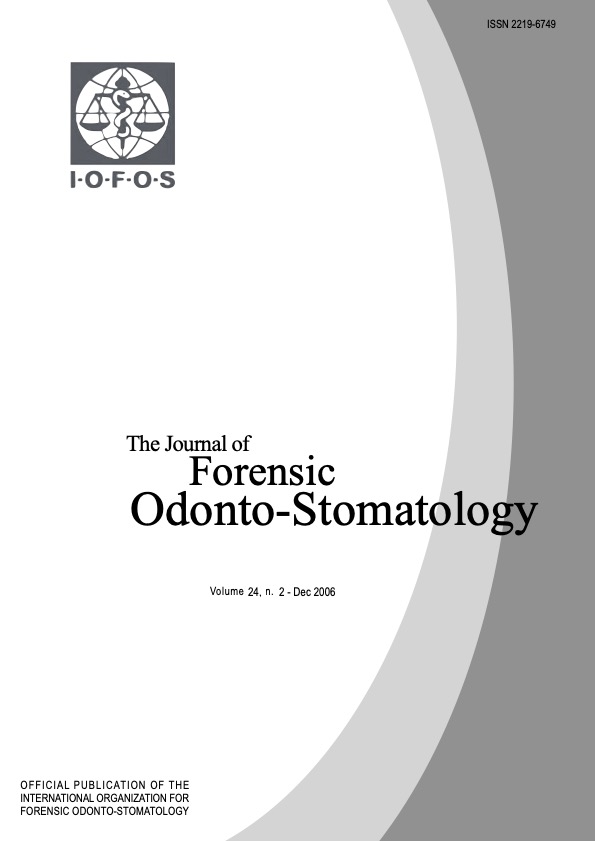The use of dental radiographs for identification of children with unrestored dentitions
Abstract
The success of dental identification is often dependent on the extent of previous dental care and the location of detailed dental records. However, several factors limit available comparable data among children. There are often no clinical indications for dental radiography before the age of five and many children and adolescents have no restorative care. This reduces the amount of individualizing information suitable for comparative identification. The aim of this study was to investigate matching of dental x-rays from children without fillings at different ages, and to see if radiographic expertise facilitated radiographic comparison. Five general dental practitioners (GDP) and five oral and maxillofacial radiologists (OMR) attempted to match bitewing examinations from 30 children. The results showed that dentists are likely to match bitewing radiographs in these conditions. This likelihood is further enhanced when oral and maxillofacial radiologists compare images. This suggests that manual comparison of bitewings from children allow sufficient concordant visible points for identification to occur.

